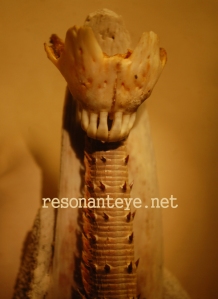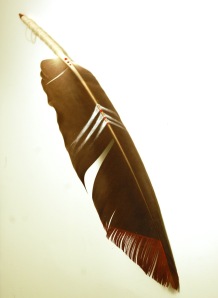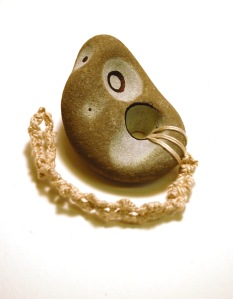somewhere there’s a feather
Warning to people using this as an informational resource: I am not a lawyer. I curse a lot. Follow the links in the text to find official sources and research, rather than relying on my say-so.

he flew into my house through an open window, I caught him and let him go. he’s a flycatcher. I didn’t keep any pieces of him, except the poops he left behind on my counter.
There’s this law, see. Every time I bring it up, people get salty about it. Hell, sometimes I get salty about it when people bring it up. But I’m bringing it up anyway.
The Migratory Bird Treaty Act makes it illegal for anyone to take, possess, import, export, transport, sell, purchase, barter, or offer for sale, purchase, or barter, any migratory bird, or the parts, nests, or eggs of such a bird except under the terms of a valid permit issued pursuant to Federal regulations.
The MBTA does not apply to: (1) Nonnative species introduced into the United States or its territories by means of intentional or unintentional human assistance…, or nonnative, human-introduced species that belong to families or groups not covered by the Canadian, Mexican, or Russian Conventions.
(If you have found a feather, there are resources at the very end of this post to help you figure out what bird it’s from, and if you can keep it or not. Click ‘read more’ then scroll down.)

seriously, these guys kept coming in. that place had big windows, they really liked shitting all over my house and refusing to fly back out. this is a female, maybe the special friend of the other bird. she also left some potentially-illegal feces behind.
Definitely-legal feathers come from European Starlings, House Sparrows, Rock Pigeons, Eurasian Collared Doves, AND basically any bird you are legally allowed to hunt (meaning, YOU have a hunting license for it) or farm/have as a pet legally- these game and domestic birds include non-native parrots, wild turkey, pheasant, some geese, peacocks, some grouse, domestic chickens, domestic ducks, domestic geese, domestic quail, and domestic turkey.
(side note: all the feathers used in my work are from legal species and sources; I paint and stain legal feathers to resemble rare/illegal ones, and you can too, and if you do I will keep liking you and your art)
There’s a damn good reason for these laws. I know that you’re thinking, “but I’m not out harvesting cormorants, smashing baby sparrows, and yanking the tails of owls! I found it on the ground, how could it possibly harm anyone for me to just have it in my own house?”

chicken feathers behind a fox skull. these look rad and they’re legal and easy to obtain.
It’s harmful because people actually do kill these birds to get their feathers, and they can and do say the same fucking thing when they get caught. In order to keep poachers from saying they “found” feathers that they actually killed to get, the law simply won’t allow anyone to have them at all. This includes you, and me, and includes ‘private collections’ and ‘I won’t sell it I just want it for my shrine’. I won’t even get started on people who are selling protected birds’ feathers (online or off) because it makes me too frothy and I want this article to make sense.It used to be that poachers could claim they had ‘found feathers’, and didn’t actually kill the birds. This law ensures that this doesn’t happen. There are exceptions and loopholes, of course, but you’ll need paperwork to fit into them.
I understand that it feels like the Fun Police have arrived when someone brings up the fact that you’re endangering birds by keeping those crow feathers in your hat. Hell, I know that before I got super involved in this kind of art I pretty much felt the same way. It wasn’t until I did a lot more reading and a lot more thinking that I really got it. I don’t mean to prevent you from making cool stuff. I truly understand, and I also dislike the arrival of the Fun Police in general. But.
BUT. But there’s this law, see. And if you’re breaking it, you’re not being an Ethical Shaman-type Person. So if you wish to represent yourself as a Magical Unicorn Dancer of Good Intentions and The Like, read on. (Evil Bastards of Doom, feel free to skip ahead to the “crow” or “canada goose” sections, or just go squash a european starling.)






 I’ve got a painting by my friend Nora, a photograph my friend Rachel took, and two big collage mounts by
I’ve got a painting by my friend Nora, a photograph my friend Rachel took, and two big collage mounts by